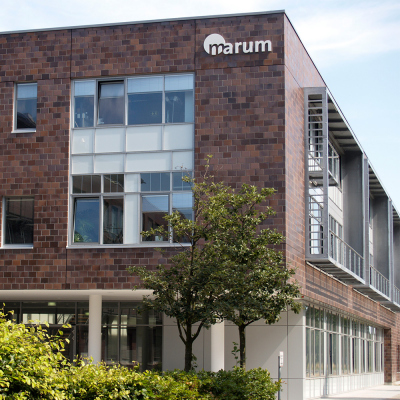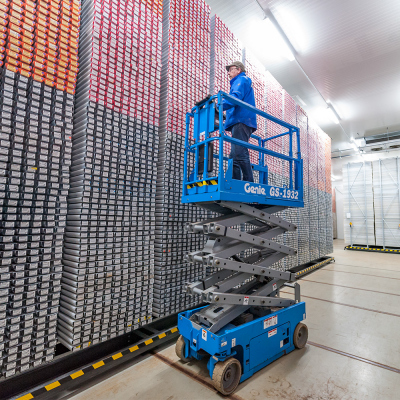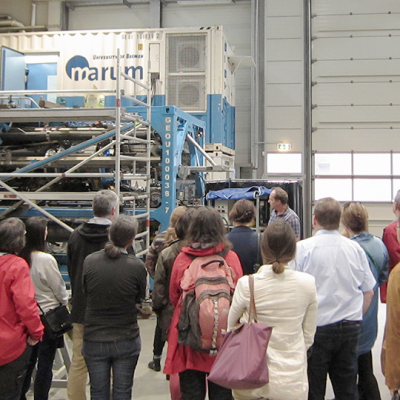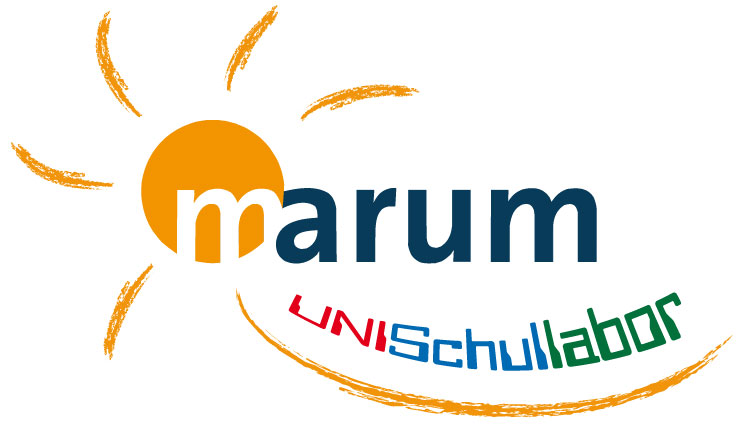- Home
- Our Offers
- Meet us!
- Guided tours
Guided tours
Welcome to MARUM!
MARUM is gaining fundamental scientific insights into the role of the ocean and the ocean floor in the Earth system.
Join us on a journey to the sea bed and discover the secrets of the deep sea. In our deep-sea cinema, we show videos recorded by our diving robot at a depth of several thousand meters.
A tour of MARUM provides an overview of deep-sea technologies such as the MARUM-MeBo seafloor drilling rig or the remote-controlled diving robot MARUM-QUEST. Only the use of these underwater technologies makes research work at MARUM possible.
MARUM is also home to the Bremen core repository of the International Ocean Discovery Program (IODP), where more than 187 kilometers of cores from the sea floor are stored.
We offer public group tours on request. Unfortunately, all dates are currently booked.

Welcome!
At MARUM – Centre for Marine Environmental Sciences, scientists are working on deciphering the role of the ocean and the ocean floor in the Earth system. We present MARUM in several parts.
Fascination of the deep sea - overview of research topics
The ocean floor makes up 71 percent of the Earth's solid surface and is located on average 3,700 meters below the sea surface. It is difficult to access and its investigation requires ship expeditions and the use of highly specialized underwater technologies.
Scientists at MARUM are working on three fields of research: Interactions between the ocean and climate, biogeochemical processes on and in the seabed and the dynamics of the ocean floor. MARUM is also home to the Cluster of Excellence "The ocean floor - Earth's unchartered interface".
Remotely controlled diving robots
How do you actually explore the deep sea? An area that is so inhospitable that humans cannot easily survive there. One possibility is unmanned remote-controlled diving robots - so-called ROVs (remotely operated vehicles). We have two of these at MARUM - Centre for Marine Environmental Sciences at the University of Bremen.
The ROV MARUM-QUEST has already dived more than 450 times and can do so to a depth of 4,000 meters. It takes targeted samples from the seabed or uses its cameras to provide us with photos and videos of black smokers, tube worms and cold-water corals. The diving robot is our arm and our eye in the deep sea.
More information about the ROV MARUM-QUEST can also be found here.
MARUM-MeBo seabed drill rigs
Research at MARUM requires samples to be taken directly from the ocean floor. The two seafloor drilling rigs MARUM-MeBo70 and MARUM-MeBo200 are used for this purpose on carefully prepared expeditions. Both devices were developed at MARUM.
They can be deployed from the larger research vessels, making marine research much more flexible - any larger research vessel can become a drilling ship. Both devices can work in water depths of up to 2,000 metres and are connected to the control container on the working deck by a cable.
It takes an average of three years to prepare for an expedition. The missions are coordinated by the German Research Vessel Control Centre, for example.
More information:
German Research Vessel Coordination Centre
Portal German Research Vessels
Bremen IODP core repository
Over 187 kilometres of drill cores are stored in the IODP drill core repository. They originate from expeditions as part of the international IODP drilling programme. The aim of the programme is to explore previously inaccessible areas of the ocean floor. This includes, above all, processes that take place under water. Sediments and solid rock - which make up the drill cores stored in Bremen - form a library of the earth's history.






